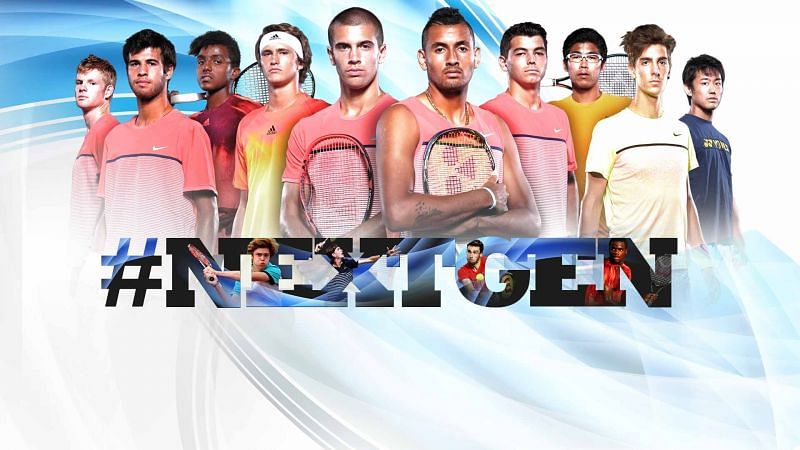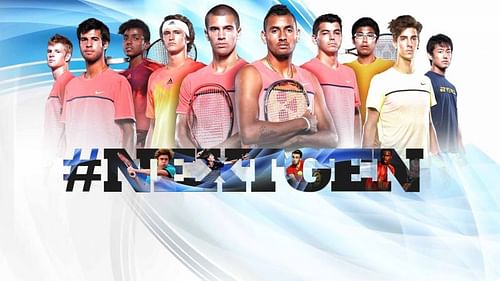
Why the NextGen is still not ready to take over from the Big Four

Back in the late 90s when tennis was dominated by the likes of Andre Agassi, Boris Becker, and Pete Sampras with the likes of Patrick Rafter, Juan Carlos Ferrero, and Goran Ivanisevic following close behind, each player had a style of play that kept them in the hunt for the big prizes.
While Sampras won a then-record 14 Grand Slam titles with the ever-reliable all-round play, Agassi tasted a lot of success with counter-punching and baseline play. Meanwhile, Ivanisevic showed that players can be competitive in Grand Slams with rocket serves.
In the early 2000s, tennis had a rather smooth transition with the top players nearing their end. The likes of Andy Roddick, Lleyton Hewitt, Marat Safin, Roger Federer, and Rafael Nadal took over the mantle with their styles similar to one of the former top players. While Roger Federer has been probably the most successful player of recent times with his all-round ability, Nadal has not been too far behind, with his baseline play winning him a lot of laurels.
Andy Murray and Novak Djokovic, who started off their careers right after Federer and Nadal tasted a lot of success with their own styles of play. Though both of them initially took time to analyze and conquer the big two, they eventually came out trumps and have since gone on to win many big titles including Grand Slams.
Innovation and adapting to the styles of their opponents have been the key to the success of the big four. While having a particularly effective style of play is important on one hand, the ability to handle the pressure of playing top-ranked opponents in front of huge crowds on big stages is equally important in separating the good from the best.
The NextGen, including players like Grigor Dimitrov, Nick Kyrgios, Alexander Zverev, Dominic Thiem, and David Goffin to name a few, definitely have the potential to make it big. Having observed their play over the recent past though, it is safe enough to say that they are lacking adaptability and the ability to handle pressure.
Grigor Dimitrov, who came to be known as 'Baby Fed' for his style of play, was probably the first among the lot to be touted as the successor of the big four. After showing off his potential in 2014, when he reached the quarter-finals of the Australian Open and the Wimbledon semi-finals while winning three titles in between the two Grand Slams, he endured a dismal 2015 when he finished the year outside the top 20.
This can be partly attributed to poor form and partly to all the attention that he started receiving after doing so well the previous year. There were instances where he lost while leading comfortably in the match against lower ranked opponents, which is completely unlike an upcoming top player. A few more reasons that could be attributed to his slump was the changing of his racquet and constant changing of his coaches.
Training with Roger Rasheed in 2015 did not yield results and he roped in Franco Davin in 2016 only to part ways with him prior to Wimbledon and finally hiring Daniel Vallverdu, Andy Murray's former coach. The move did prove to be good as Dimitrov improved his 2016 season and had the best season of his career in 2017 when he won the Masters 1000 in Cincinnati and the ATP World Tour Finals while also reaching the semi-finals of the Australian Open.
Nick Kyrgios, who became a household name after he beat Nadal at Wimbledon in 2014 has let his attitude and emotions take over his game, more often than not. Be it shouting at the chair umpire, linesperson or at the crowd, Kyrgios has always welcomed controversies and attracted huge fines. Such behaviour does not augur well for someone who is highly talented and has the ingredients to beat any player on his day.
The inability to control emotions and concentrate on the game has been Kyrgios' primary reason for not doing well consistently. There is absolutely no doubt about his talent and skills as he is the only the second player to beat Federer, Nadal, and Djokovic in his very first attempt. Another reason for his inconsistency is the recurring hip injury that he suffers from. He was forced to retire from the US Open in 2016 and shut down his 2017 season because of the hip injury.
Alexander Zverev had a stellar 2017 as he won two Masters 1000 titles, beating Federer in the finals in Montreal. He managed to win big titles in a year that was dominated by Federer and Nadal. But he is one player who has struggled to reach the second week in Grand Slams.
In Zverev's case, the failures are more mental than technical or physical. He is one of the youngest players to break into the top five in recent times and has the game to beat the top players. But more often than not, he seems to fizzle out after a tournament win and is still finding it hard to keep up the consistency.
Even with a depleted men's tour in 2017, the NextGen failed to cash in. With the ability of the big four to increase the level of their game when challenges are thrown at them and with their 'never give up' attitude, it will take a lot out of the NextGen to win against them and make a mark on the highest stage. It is safe to say that the big four are still here to stay and the NextGen players will have to show their mettle in order to topple them.